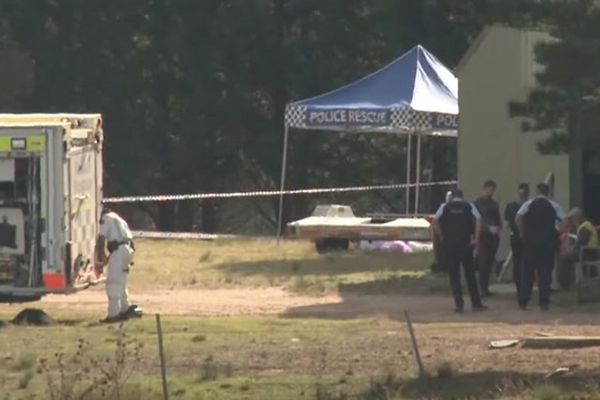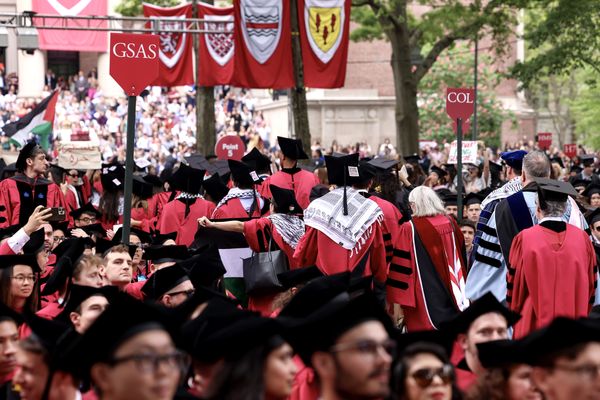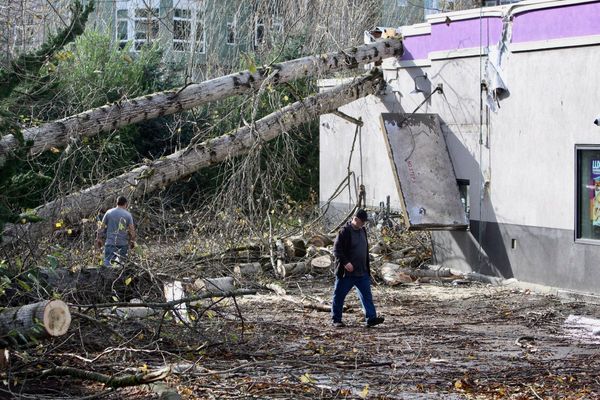
You could give Donald Trump that Nobel peace prize right now. For a few days, he succeeded in uniting Palestinians and Israelis, though not quite in the way favoured by the judging panel in Norway. Instead, he had both sides holding their breath, hoping he was not about to destroy the closest thing to hope they have known in 16 months.
I am referring to the deal done nearly four weeks ago which has allowed for a ceasefire in Gaza, along with the phased release of hostages held by Hamas and prisoners held by Israel. It was always perilously fragile, but this week it looked to be on the brink of collapse. First came a Hamas threat to postpone the next release of three hostages, due tomorrow, in response to alleged Israeli violations of the ceasefire. Then Trump weighed in, saying that he no longer liked the deal brokered by the Biden administration anyway, that he’d had enough of hostages freed “in dribs and drabs” and wanted all of them out in one go, by noon Saturday. Otherwise, he said, “all hell is going to break out”.
That sent a tremor through Palestinians currently returning to the flattened ruins of their homes, who feel hell broke loose for them long ago. But it had a similar effect on many Israelis, especially the families of those still held captive in Hamas’s dungeons, who desperately want the current arrangement to hold at least until they get their loved ones back.
Journalists cannot enter Gaza, but I was in Israel this week and saw for myself at least the latter half of the equation. When I reported from there a few weeks after the 7 October attacks, I was struck by how time seemed suspended, how frozen the country was in the terror of that day, when at least 1,200 Israelis, mostly civilians, were killed and more than 250 taken hostage. That remains true today. For Israelis, it’s still 7 October.
What has kept so many of them stuck is the wait for the hostages’ return. It might be the Tel Aviv skyscraper lit up with the number of days of captivity – it will be 500 on Monday – and the message “All of us are waiting for you”, or the stickers and posters of their faces plastered on street corners and bus shelters. Either way, anxiety for their plight hangs heavy in the air.
It gained a new urgency after the release last Saturday of three male hostages, each one visibly emaciated. The sight immediately struck a nerve that lies close to the surface of Israeli society: I heard the three referred to as Muselmänner, the name Auschwitz prisoners gave to the walking skeletons among them.
It has prompted a terrible fear for the captives still held, one deepened by the assumption that Hamas has repeated the move it made during the first round of prisoner releases in November 2023: namely, giving extra rations to those due for release, to fatten them up for the cameras – that, in other words, the three who came out last Saturday were in an even worse condition before. That has left the hostage families in the no man’s land between hope and dread: hope that their father or son will come out, dread at the state they’ll be in.
I spoke to Effie, whose 50-year-old brother, Ohad Yahalomi, was taken on 7 October. She closed her business and became a full-time campaigner for his freedom; she can think of nothing else. “It’s like an open wound that you cannot treat until this is over.” She cannot move on till he is back, and in that she is like much of her country.
But beyond dread, there is rage. The manner of the hostages’ release has inflamed yet further the loathing Israelis feel for Hamas. The staged handover ceremonies, in which dazed captives, many of them held underground for many months, are dressed in fatigues and made to pose for propaganda images had already set Israeli teeth on edge. But last week saw a masked Hamas gunman put a microphone in front of returning hostage Eli Sharabi, encouraging him to say he was looking forward to seeing his wife and teenage daughters. What Sharabi did not know, but his captors surely did, was that his wife and daughters were murdered on 7 October.
All this is feeding an implacable fury that has several consequences. The first is that many of those Israelis who prided themselves on their empathy and would once have been part of the peace camp – which had deep roots, incidentally, in the very kibbutzim that felt the full force of the 7 October attacks – now have little or no room in their hearts for the suffering of Palestinians in Gaza. Israeli media rarely show the devastation Israeli bombardment has wreaked on the strip; most Israelis don’t see what the rest of the world sees. They know that thousands have been killed, but they put the blame squarely on Hamas, which surely knew what it was unleashing on 7 October.
These are the sentiments Benjamin Netanyahu so expertly plays on when he promises Israelis the complete and imminent elimination of Hamas by military means, leading most observers to conclude he has no intention of moving to the ceasefire deal’s second phase. He wants the war to resume, and for cynical reasons: because if the war continues, his far-right coalition members stay onboard, keeping him in the prime minister’s chair and out of jail. (His trial on corruption charges is ongoing.)
What’s more, a new phase would not simply pick up where Israel left off. The esteemed military analyst Amos Harel warns that “particularly intense warfare is planned this time, along with a siege on parts of the strip”. With a green light from Trump, who says he wants to empty Gaza of its people and turn it into a US-owned beach resort, Netanyahu would embark on a “very aggressive”, two-month operation that would, Harel writes, culminate in “the forced expulsion of Palestinians”.
There is some opposition to the plan within the Israeli military, not least because it all but guarantees the deaths of the remaining hostages, but surely the only lasting way out of this nightmare is a change in the leadership of both Palestinians and Israelis. This week, I met Yair Golan, the new leader of what was the Israeli Labor party, now rebadged as the Democrats. A former general, Golan is hailed as one of the heroes of 7 October: that morning, he put on his old uniform, drove south and saved several young Israelis fleeing the Hamas men who had been mowing down hundreds of people at the Nova music festival.
Golan speaks robust good sense. He castigates Netanyahu for wanting to keep Israelis in a constant state of emergency and anxiety, says Israel has nothing to fear from a long ceasefire and believes that, ultimately: “It’s not enough to fight the military wing of Hamas. Equally important is to provide an alternative to Hamas.” Only when “a young Palestinian” can see the path to a better future that does not involve violence will Hamas be truly defeated.
In the Israel of 30 years ago, Golan would be a deservedly serious candidate for prime minister. But for three decades, Israeli politics has been dominated by Netanyahu: he is the tree in whose shade nothing grows. His outriders and media allies have created a “poison machine” that destroys all challengers. And much of the Israeli public struggles to see through the anger, pain and grief that descended on 7 October and which has barely lifted.
Those who want change have to hope that Netanyahu has erred by tying himself to an erratic, if not unstable, US president abroad and to extremist allies at home, and that is too combustible a mixture to last. I badly want that to be right. But I also know there’s a reason why hope has always been the Middle East’s scarcest commodity.
Jonathan Freedland is a Guardian columnist
Do you have an opinion on the issues raised in this article? If you would like to submit a response of up to 300 words by email to be considered for publication in our letters section, please click here.







